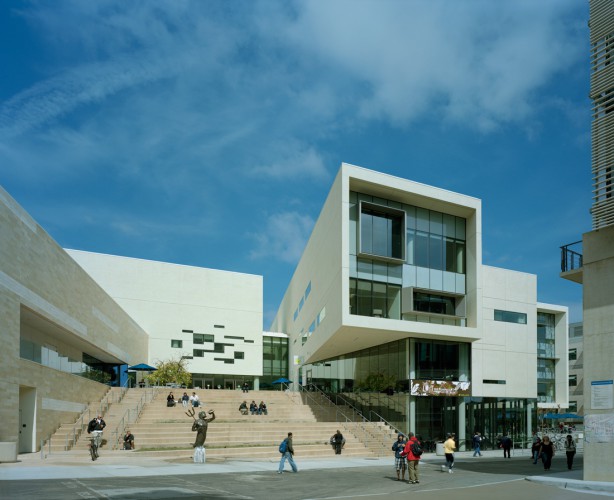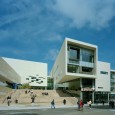
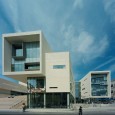
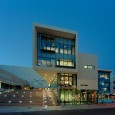
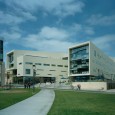
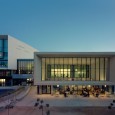
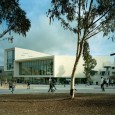
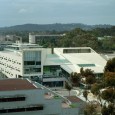
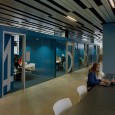
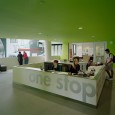
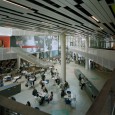
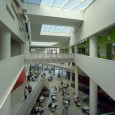
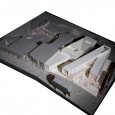
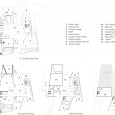
Name: UCSD Price Center East
Location: La Jolla, California, USA
Architect: Yazdani Studio , Mehrdad Yazdani
Design Principal: Craig Hamilton, AIA, LEED AP
Project principal: Ron Benson
Project Manager : Mark Piaia, AIA
Project Architect : John Chan, Yan Krymsky,Manson Fung, Tommy Yuen, Jim Peshl, QA/QC, Jack Poulin, IIDA
Interior FFE: Hong Gip, Lily Chiu, AIA, LEED AP, Lauren Coles, Frank Maldonado, Mi Sun Lim
Date: 2009
Structural engineer: Englekirk and Sabol
Mechanical Engineer: IBE Consulting Engineers
Electrical engineer: Coffman
Landscape Architect: Pamela Burton & Company
Civil Engineers: Hirsh & Company
Cost Estimators: Cumming LLC
Lighting designer: Lighting Design Alliance
Acoustician: Newson Brown Acoustics, LLC
General contractor: M.A. Mortensen Company
Total floor area: 172,000sf new construction, 66,000sf renovated, 238,000 total sf.
Client: University of California, San Diego
Budget: US $53,000,000
Cost/sq. ft: $223
Photographer: Timothy Hursley
The plan of the University of California at San Diego’s existing student center, the Price Center, was developed with an “introverted” configuration – a central courtyard bordered on three sides by all of the building’s program elements facing inward – that established a powerful sense of place and a hub for dining, socializing, and events. When the university’s growth necessitated an expansion of the Price Center, our solution was to create an “extroverted,” highly permeable addition offering many points of entry and features such as plazas and monumental staircases that engage the building’s surroundings and enrich the street experience.
The 172,000 sf addition expands the bookstore and the space available for retail, foodservice, and student organizations and reinforces the primary pedestrian circulation paths linking the sides of campus. In response to the gradual slope of the site, the addition has two “ground floors,” as does the original Price Center, enhancing the accessibility of both the existing facility and the expansion and maximizing revenue from and synergy among retail and foodservice outlets, all located at grade.
Consistent with the planning goals of the UCSD Master Plan and the University Center Design Guidelines, the addition’s architectural character and multiple points of entry aid the transformation of the surrounding University Center neighborhood into a “town center”: a lively, dense, pedestrian-oriented area with a distinctive urban quality, serving as hub for many different activities and the heart of the campus. In support of the university’s goal of achieving the equivalent of a LEED Silver rating, the project incorporates a number of sustainable design elements.
In the Price Center Expansion, an HVAC system tailored to the microclimate of the La Jolla Mesa uses relief air to serve multiple purposes. Outside air is cooled, filtered, and drawn into office areas, then directed to the building’s large atrium space, and finally vented out through spaces that can operate at higher temperatures, such as mechanical and electrical rooms, cooking facilities, and loading docks. The ventilation of mechanical rooms with relief air from the building protects equipment from ocean moisture and salt without requiring additional filtration. With a capacity 30% below standard, the expansion’s HVAC system was achieved at a first cost of 20% less than a typical San Diego office VAV system – even with the additional ductwork.
Chilled-water control valves dramatically improve the temperature difference between supply and return chilled water, improving the central plant’s efficiency and expanding the capacity of existing equipment. In harmony with the mild climate, the building’s heating system provides heat only in required locations at the building perimeter and capitalizes upon internal heat generated from lighting and other sources. Taken together, the building’s innovations yield an overall energy efficiency that significantly exceeds California Title 24 standards.



